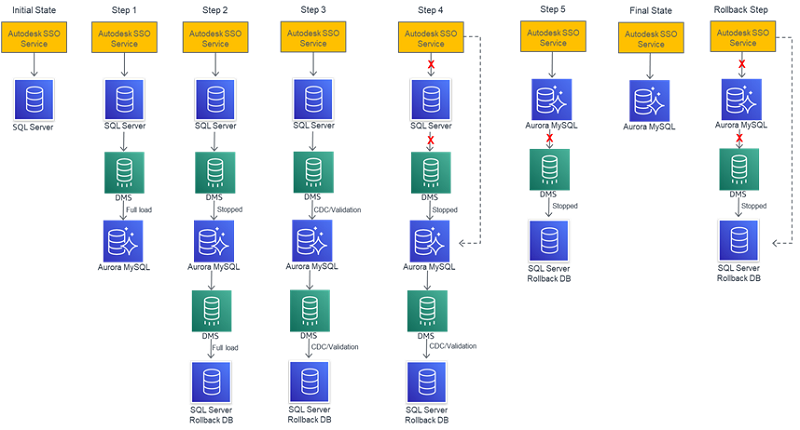AWS Database Blog
Tag: Aurora MySQL
Best practices for exporting and importing data from Amazon Aurora MySQL to Amazon S3
You can build highly distributed applications using a multitude of purpose-built databases by decoupling complex applications into smaller pieces, which allows you to choose the right database for the right job. Amazon Aurora is the preferred choice for OLTP workloads. Aurora makes it easy to set up, operate, and scale a relational database in the […]
Recap of Amazon RDS and Aurora features launched in 2019
Updated 04/2022 to reflect product changes. Amazon Relational Database Service (Amazon RDS) makes it easy to set up, operate, and scale a relational database in the cloud. It provides cost-efficient and resizable capacity. At the same time, it automates time-consuming administration tasks such as hardware provisioning, database setup, patching, and backups. It frees you to […]
Migrating to Amazon Aurora MySQL with fallback option using GTID-based replication
When migrating production applications, it is often important to have a fallback option. This blog post demonstrates how to use global transaction identifier (GTID)-based replication to migrate Amazon RDS MySQL workloads to Amazon Aurora MySQL. We also discuss how to use a fallback mechanism in case you encounter any issues. For more information about GTID-based […]
Migrating Autodesk’s mission-critical database from Microsoft SQL Server to Amazon Aurora MySQL
This is a guest post from Tulika Shrivastava, Software Architect from Autodesk, in partnership with Rama Thamman from AWS. In their own words, “Autodesk is a leader in 3D design, engineering, and entertainment software. If you’ve ever driven a car, admired a towering skyscraper, used a smartphone, or watched a great film, chances are you’ve […]
Running sysbench on RDS MySQL, RDS MariaDB, and Amazon Aurora MySQL via SSL/TLS
sysbench is an ideal tool for running synthetic benchmarking on MySQL compatible databases. The Amazon Aurora Performance Assessment Technical Guide helps you assess the performance of Amazon Aurora MySQL by using sysbench. However, if you want to run sysbench on MySQL-compatible databases running on RDS or Aurora via SSL/TLS, you also need to consider some […]
Performing SQL database client-side encryption for multi-Region high availability
Important Update: On 06/16/2021 AWS Key Management Service (AWS KMS) introduced multi-Region keys, a new capability that lets you replicate keys from one AWS Region into another. With multi-Region keys, you can more easily move encrypted data between Regions without having to decrypt and re-encrypt with different keys in each Region. Multi-Region keys are supported […]
Build highly available MySQL applications using Amazon Aurora Multi-Master
Do you have transactional applications that have high uptime requirements? Do you want a relational database in the cloud to help you meet those requirements? The newly launched Amazon Aurora Multi-Master, is designed for applications that need a relational database resilient to node failures and highly available for both reads and writes. Amazon Aurora is […]
Use the Data API to interact with an Amazon Aurora Serverless MySQL database
Amazon Aurora Serverless is an on-demand, automatically scaling configuration for Amazon Aurora (MySQL-compatible edition). The database automatically starts up, shuts down, and scales capacity based on your application’s needs. It enables you to run your database in the cloud without managing any database instances. It’s a simple, cost-effective option for infrequent, intermittent, or unpredictable workloads. Recently, AWS announced […]
Migrating mission-critical SaaS production workloads to Aurora MySQL from RDS Classic
Sumo Logic started around the same time as the AWS stack was starting to mature. The company initially chose infrastructure that was tried and tested, but also cutting-edge at the time, namely Amazon RDS for MySQL instances. However, over time, that choice started to cost us a significant number of developer hours. Developers spent time […]
Best practices for Amazon Aurora MySQL database configuration
After migrating or launching your new Amazon Aurora MySQL instance in the AWS Cloud, have you asked yourself one or more of the following questions? “What are the next steps? How can I make it run optimally?” “Is it recommended to modify any existing parameters?” “What parameters should I modify?” If so, I hope that […]








